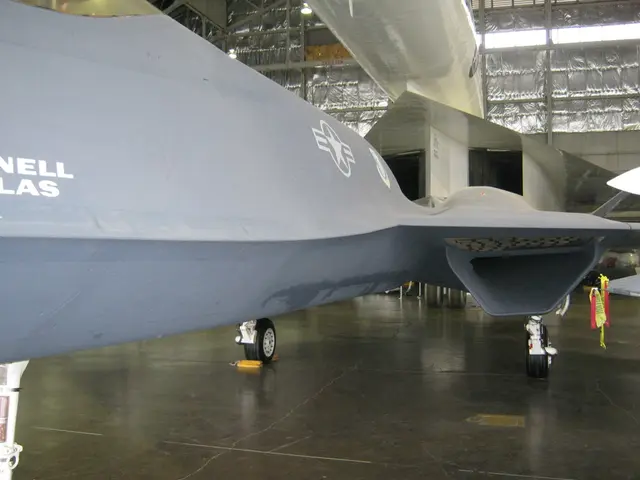In the conflict between Ukraine and Russia, drones are proving crucial (and human suffering is increasing)
In the ongoing conflict between Ukraine and Russia, drones have emerged as a significant factor, creating a hardened and unyielding environment that has prevented either side from achieving a decisive breakthrough. This was evident on Day 1,302, when a Ukrainian drone struck a car in Russia's Belgorod border region, resulting in one fatality.
The use of drones has been a topic of concern for various international organisations. U.N. Secretary-General António Guterres has urged the international community to negotiate a treaty prohibiting autonomous weapons systems by 2026. Human Rights Watch has also called for an international treaty to ban 'killer robots' that select and attack targets without human oversight, due to the potential risks they pose to human life and rights.
However, as of now, no specific countries have formally issued a declaration regulating or banning killer robots. The Cato Institute reported on a former needleworker who converted her Kyiv shop into a drone assembly line, producing over 1,000 drones last year. This DIY approach to drone production underscores the accessibility and potential proliferation of these weapons.
The Ukrainian air force reports that 33 locations across the country were hit in the aforementioned attack. Russia, on the other hand, has sent an onslaught of over 37,000 attack drones and decoys into Ukraine this year alone, according to data compiled by the Institute for the Study of War.
Experts suggest that, if current patterns continue, drones may have made it impossible for either side to 'win' the war militarily. In an essay for the Moscow-based Centre for Analysis of Strategies and Technologies think tank, its director wrote that drones will likely displace all group infantry weapons, anti-tank weapons, and most artillery tasks.
The conflict in Ukraine has been ongoing for 1,302 days, with both countries experiencing heavy infantry losses. The Cato Institute reported that, at its current incremental rate of advance, it would take Russia 116 years to conquer all of Ukraine. This stark reality, coupled with the increasing role of drones, has led some to question the feasibility of military victory in this conflict.
Poland, a neighbouring country, has been affected by the conflict as well. Polish Prime Minister Donald Tusk stated that the drone incident was 'the closest we have been to open conflict since World War II.' Poland shot down drones in its airspace, with at least 19 having entered, with the backing of military aircraft from its NATO allies.
Rosie DiManno, a Toronto-based columnist covering sports and current affairs for the Star, has also weighed in on the issue. She wrote, 'Drones have become the new normal in this war, and their impact is far-reaching and devastating.'
As the international community grapples with the implications of autonomous weapons systems, the ongoing conflict in Ukraine serves as a stark reminder of the potential consequences of their unregulated use. The future of this war, and potentially many others, may hinge on the decisions made regarding these technologies.
Read also:
- Automotive Updates: Wolfspeed, NVIDIA, ABB, and Veritone in Spotlight
- Demonstrating Carbon Storage in Agricultural Forestry through Digital Monitoring and Verification
- Interview Questions for Erica Tandori, an Artist, Intellectual, and Educator at Monash University
- European Investment Bank Allocates €20 Million to Greek Food Technology Firm STIQ








